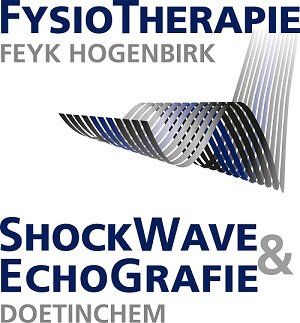Tennis-/Golfersarm
Tennis-/Golfersarm
What is tennis elbow?
Tennis elbow is also called epicondylitis lateralis humeri. In the literature we usually find the following description: Tennis elbow is a non-bacterial tendonitis in the elbow area. The tendon originates from the lower, outer bony prominence of the upper arm. It concerns one of the tendons on the muscles that move the hand in the direction of the back of the hand. A single or multiple tendons may be affected, although it is also possible that the joint attachment point of the tendons of the forearm has become inflamed. In principle, anyone can develop tennis elbow. Although there are no specific factors that contribute to tennis elbow, there are activities that increase the risk of tennis elbow. We should especially think of activities that require wrist, hand and finger strength. (picking something up with the palm facing down = picking something up overhand). Frequent repetition of large forces and/or long-term small forces can entail risks. A typical example of long-term small strain is the mouse arm. When frequent use of the computer mouse causes elbow complaints, we almost always see a forearm with the same abnormal characteristics as tennis elbow. In addition, research shows that it usually affects people between the ages of 30 and 45. Symptoms of tennis elbow: pain on the outside of the elbow, sometimes radiating to the forearm, wrist and hand - rarely radiating to the outside of the upper arm and shoulder. loss of strength and possible coordination disorders - sometimes a typical “hard-feeling, swollen” forearm; full extension of the elbow can sometimes be painful (and limited). This complaint mainly occurs in the morning or after a longer stable position. This pain often decreases after a number of movements of the elbow. Pain when stretching the wrist extensors (extend the elbow and move the hand in the direction of the palm). Sometimes golfer's elbow* complaints are also present on the same arm (*similar complaints on the inside of the elbow) on both arms tennis elbow occurs in 10% of patients. What are the causes? In general, 2 causes can be distinguished: 1. Short-term high overload of the forearm muscles (hand extensors)2. Long-term (relatively) low overload of the forearm muscles (hand extensors)1. The complaints arise quite acutely. Unusual activities may cause overload. Small tears in the tendon and muscle tissue that are quite harmless. This forms blood spots that later calcify. The body will respond to this by initiating recovery processes. This recovery process involves an inflammatory process, which can cause pain, swelling and heat. In this phase, the recovering tendon and muscle tissue cannot be fully loaded. Active rest and light stretching and movement exercises are appropriate. The physiotherapist can guide you in this and adjust the recovery process if necessary.2. The complaints do not arise from one day to the next. This is preceded by months of repetitions of prolonged mild overload, during which unnoticed damage occurs in muscle and tendon tissue. As a result of the frequent use of these muscles, changes occur in the muscle tissue that negatively affect the normal function of the muscle. Due to the increased muscle tension, blood flow is obstructed and the muscle and tendon tissue cannot fully recover. Insufficient building materials and waste materials can be moved from the affected area. Due to the long-term change in metabolism in the elbow area, the tissue structure adapts to this, which causes complaints during normal use of the arm. It is advisable to look for the cause of this long-term overload. The physiotherapist can help you find the cause, break the constant overload, normalize the metabolism in the elbow area, guide you and adjust the recovery process. Furthermore, instability of the elbow joint can be the cause of overload of tendons and attachments. and muscles in the elbow area. If you suspect instability, the physiotherapist can investigate this and advise you. The course Normally, recovery from overload complaints takes three to four weeks. After six to eight weeks, complete recovery should have taken place. During the recovery process, connective tissue is formed on a microscopic scale. The elastic structures in muscle and tendon tissue are replaced by stiffer, inflexible tissue. Due to the change in the structure of these structures, this type of tissue responds slightly differently than usual to the commands that your brain gives to the muscles of the forearms to move the wrist. The positions of the muscles, tendons and joints that the brain perceives no longer match the positions it knows. The body responds to this by increasing muscle tension in the forearms. Because muscle tension increases, small tears constantly develop in the tendon and muscle tissue when the load is too heavy, which must be constantly repaired. Due to this continuous recovery, the affected arm becomes less and less bearable and the complaints then become more rapid and severe. Active rest and light stretching are appropriate. The physiotherapist can help you break through this constant overload, guide you and, if necessary, adjust the recovery process. What can you do to reduce the complaints? * Take active rest. Exercise lightly regularly, but keep an eye on the sensitivity of the arm. This indicates whether or not you are overloading yourself.* Regularly cool the painful area with a so-called “cold pack” or ice in a plastic bag with a (tea/towel) towel between the skin and the used cooling bag. Do this for 10 minutes at a time.* Light stretches of the wrist, bringing the fingers to the inside of the forearm.* Move without load within the range of motion where the least complaints occur.* Ensure that your condition remains optimal, taking into account with your personal capabilities and circumstances.What do we do?Physiotherapy & ShockWave Doetinchem can quickly relieve these complaints using a combination of our ESWT Shockwave Therapy and specific mobilizations combined with a so-called eccentric exercise that you must perform at home. 5 to 10 treatments are enough!
ADDRESS
Physiotherapy Feyk Hogenbirk
Gezellenlaan 21
7005 AX Doetinchem
(Free parking)
T 0314 394 222
M 0653669587
info@fysiotherapiedoetinchem.com
OPENING HOURS
- Monday
- -
- Tuesday
- -
- Wednesday
- -
- Thursday
- -
- Friday
- -
- Saturday
- Appointment only
- Sunday
- Appointment only
© 2025
All rights reserved | Disclaimer | Privacy | Website by Internet agency Doetinchem FrankBrinks.nl




